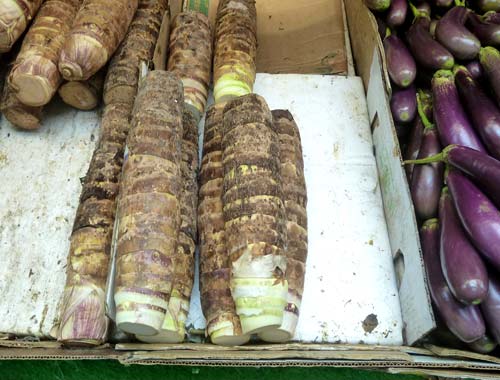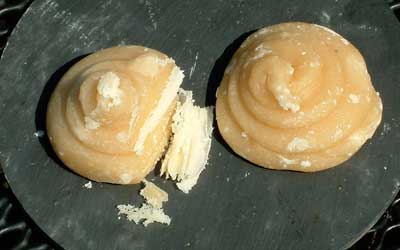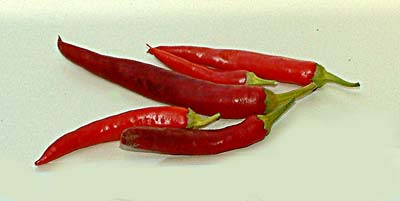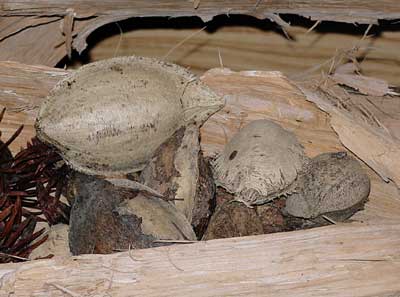Candlenut. Most commonly used to provide lamp oil. However, it can be ground and used as a thickener in foods.
Basil seeds. The seeds of the lemon-scented basil resemble poppy seeds and are often used in drinks. Sabja seeds.

Taro. Colocasia. A plant grown both for its leaves and tuberous, potato-like roots, or corms. The roots, the flesh of which may vary from white to pink, have a delicate flavour and can be peeled and boiled, roasted, mashed, fried or included in a stew.e flesh of which may vary from white to pink, have a delicate flavour and can be peeled and boiled, roasted, mashed, fried or included in a stew.

Jaggery or gur. Palm sugar, obtained from the sap of, usually, the date or Palmyra palm. It is used extensively in Indian cooking and has a flavour reminiscent of Demerara sugar (US: light brown (granulated) sugar). Palm sugar is the better quality of the two.

Bird’s Eye chillis. A very hot, slender chilli about 65 mm wide. It is green, ripening to red. It is generally used finely chopped and added to sauces.

Tropical almond. The fruit looks similar to the almond and is usually pale green, though it may be reddish-purple. There is a fibrous seed containing a pointed kernel, or nut. It can be eaten fresh and raw, or cooked. It is sometimes difficult to remove the fibrous seed without damaging the nut. There is a thin covering of skin on the nut, and it is worth removing it as it can be very astringent. It is much prized in the Moghul cooking of northern India, they are eaten fresh or used in badam barfi, fudge-like sweets, or used to thicken sauces in dishes such as korma. They are grown in Kashmir and Afghanistan as they do not grow well in tropical regions. Elsewhere, cashew and other nuts are substituted.